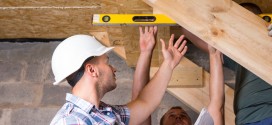Only 9 million out of 50 million mortgaged homes still have less than 20 percent equity at the end of the second quarter, a decline of 700,000 homes from the first quarter. The percentage of under equitied homeowners fell from 19.9 percent to 17.8 percentage of homes with a mortgage, CoreLogic reported today.
Borrowers who are “under-equitied” may have a more difficult time refinancing their existing homes or obtaining new financing to sell and buy another home due to underwriting constraints. Improving home values and homeowners’ principal payments are freeing homeowners to re-enter the marketplace and move up, if they wish. Large numbers of under equitied owners has been a major reason for the tight inventories that have plagued many markets in recent years.
CoreLogic® said 759,000 properties regained equity in the second quarter of 2015, bringing the total number of mortgaged residential properties with equity at the end of Q2 2015 to approximately 45.9 million, or 91 percent of all mortgaged properties. Nationwide, borrower equity increased year over year by $691 billion in Q2 2015. The total number of mortgaged residential properties with negative equity is now at 4.4 million, or 8.7 percent of all mortgaged properties. This compares to 5.1 million homes, or 10.2 percent, that had negative equity in Q1 2015, a quarter-over-quarter decrease of 1.5 percentage points. Compared with 5.4 million homes, or 10.9 percent, reported for Q2 2014, the number of underwater homes has decreased year over year by 1.1 million, or 19.4 percent.*
For the homes in negative equity status, the national aggregate value of negative equity was $309.5 billion at the end of Q2 2015, falling approximately $28.5 billion from $338 billion in Q1 2015. On a year-over-year basis, the value of negative equity declined overall from $350 billion in Q2 2014, representing a decrease of 11.6 percent in 12 months.
“Home price appreciation and foreclosure completions both reduce the number of homeowners with negative equity, the latter because most homeowners who lost homes through foreclosure had some level of negative equity,” said Frank Nothaft, chief economist for CoreLogic. “Between June 2014 and June 2015, the CoreLogic national Home Price Index (HPI) rose 5.6 percent and we reported the number of homes completing foreclosure proceedings exceeded one-half million. Both of these factors helped reduce the number of homeowners with negative equity by one million over the year ending in June.”
“For much of the country, the negative equity epidemic is lifting. The biggest reason for this improvement has been the relentless rise in home prices over the past three years which reflects increasing money flows into housing and a lack of housing stock in many markets,” said Anand Nallathambi, president and CEO of CoreLogic. “CoreLogic predicts home prices to rise an additional 4.7 percent over the next year, and if this happens, 800,000 homeowners could regain positive equity by July 2016.”
Highlights as of Q2 2015:
Nevada had the highest percentage of mortgaged residential properties in negative equity at 20.6 percent, followed by Florida (18.5 percent), Arizona (15.4 percent), Rhode Island (13.8 percent) and Illinois (13.1 percent). Combined, these five states accounted for 31.7 percent of negative equity in the U.S.
Texas had the highest percentage of mortgaged residential properties in positive equity at 97.9 percent, followed by Alaska (97.6 percent), Hawaii (97.5 percent), Montana (97.2 percent) and Colorado (96.7 percent).
Of the 25 largest Core Based Statistical Areas (CBSAs) based on mortgage count, Tampa-St. Petersburg-Clearwater, FL had the highest percentage of mortgaged residential properties in negative equity at 20.2 percent, followed by Phoenix-Mesa-Scottsdale, AZ (15.4 percent), Chicago-Naperville-Arlington Heights, IL (15.3 percent), Riverside-San Bernardino-Ontario, CA (12.3 percent) and Warren-Troy-Farmington Hills, MI (11.8 percent).
Of the same largest 25 CBSAs, Houston-The Woodlands-Sugar Land, TX had the highest percentage of mortgaged properties with positive equity at 98.1 percent, followed by Portland-Vancouver-Hillsboro, OR-WA (97.8 percent), Dallas-Plano-Irving, TX (97.8 percent), Anaheim-Santa Ana-Irvine, CA (97.5 percent) and Denver-Aurora-Lakewood, CO (97.5 percent).
Of the total $309 billion in negative equity, first liens without home equity loans accounted for $168 billion, or 54 percent, in aggregate negative equity, while first liens with home equity loans accounted for $142 billion, or 46 percent.
Approximately 2.6 million underwater borrowers hold first liens without home equity loans. The average mortgage balance for this group of borrowers is $239,000 and the average underwater amount is $64,000.
Approximately 1.7 million underwater borrowers hold both first and second liens. The average mortgage balance for this group of borrowers is $303,000 and the average underwater amount is $82,000.
The bulk of positive equity for mortgaged properties is concentrated at the high end of the housing market. For example, 95 percent of homes valued at greater than $200,000 have equity, compared with 87 percent of homes valued at less than $200,000.
*Q1 2015 data was revised. Revisions with public records data are standard, and to ensure accuracy, CoreLogic incorporates the newly released public data to provide updated results.
 RealEstateEconomyWatch.com Insight and Intelligence on Residential Real Estate
RealEstateEconomyWatch.com Insight and Intelligence on Residential Real Estate



One comment
Pingback: Homeowners’ Equity Takes Big Leap Forward | Belair Realty